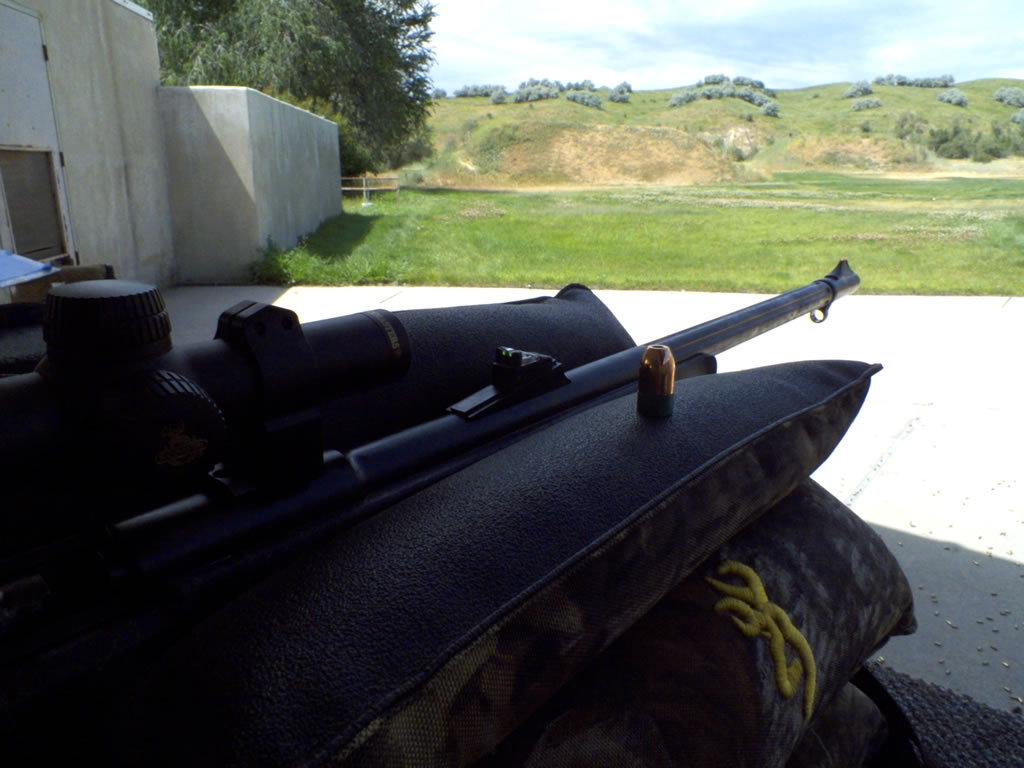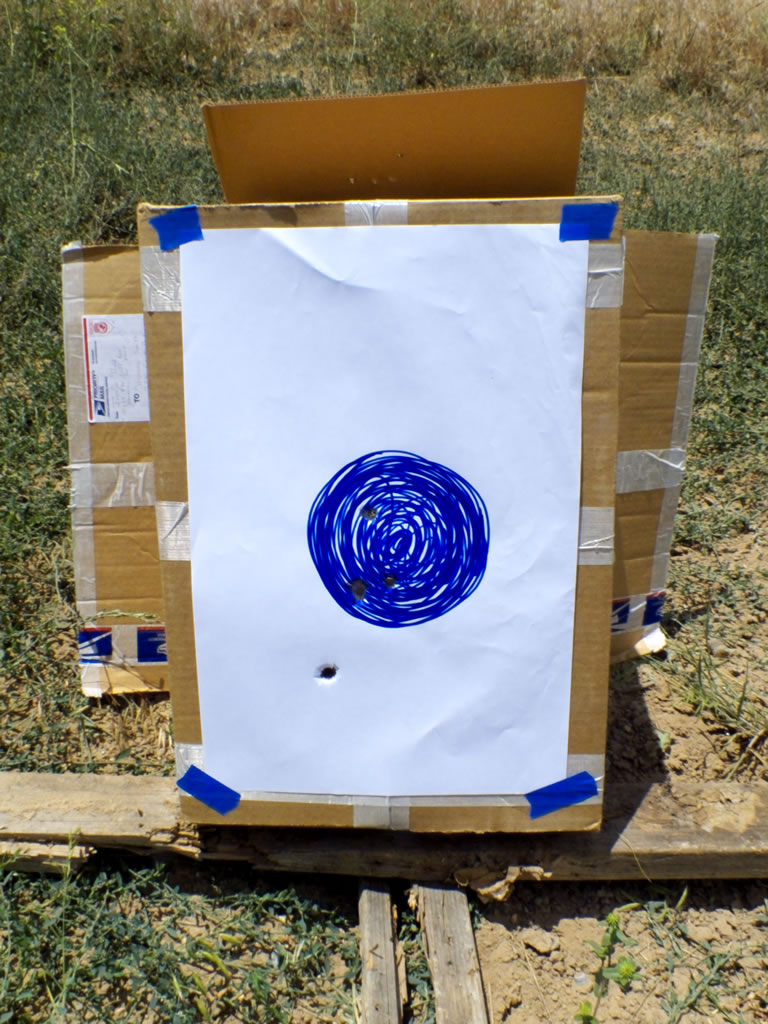This is the 295g Powerbelt bullet that I am going to be hunting with for the 2011 Utah mule deer season. You can also see my Nikon Buckmaster 1x20 muzzleloader scope. I really like having this scope as compared to open sights, mainly because with open sights the target is completely covered from view by the rifle at targets much past 50 yards, whereas with the scope I can have a clear view all around the deer when shooting.
For the 2011 deer season, I have a muzzleloader tag in my pocket so I wanted to break out the muzzleloader early and make sure what bullet I was going to use.
When I first started muzzleloader deer hunting back in the 80's I used a round ball and patch. Sometime during the 90's I switched over to a plastic sabot with a 44 caliber pistol bullet. I used this sabot bullet combo to take my last muzzleloader deer in 2007, my largest to date, a 31" wide mule deer.
A trip down the muzzleloader isle at Sportsmans Warehouse I found that there are many different options for bullets now days as compared to my early muzzleloading hunting days of the past. I decided to go with the mid-weight Powerbelt 50 caliber 295 Grain Hollow Point bullet. I have read online of great accuracy and I have also heard that the bullet can come apart in deer at high velocities. With the mid-weight bullet (this bullet is offered in 245, 295 and 348 grains with or without an Aerotip) and only 100 grains of Hodgdon's Pyrodex pellets I am hopeful the bullet will have just the right weight and speed to offer good expansion but not completely disintegrate when hitting a deer. And also have enough speed for a decent trajectory and energy.
My muzzleloading rifle is a CVA Firebolt in 50 caliber. It is the same muzzleloader I used to take my 31" mule deer in 2007 with the exception that this year I now have a Nikon Buckmaster 1x20 scope on top. I really like the scope compared to iron sights.
Here is my 2 1/2 inch three-shot group at 100 yards with my CVA Firebolt with Nikon Buckmaster 1x20 muzzleloader scope shooting 295g Powerbelt bullets. The shot low is my first shot, a fouling shot where I had a bunch of Bore Butter left in the barrel from storing the muzzleloader. The next three shots are my 2 1/2 inch three shot group all inside the blue circle.
I was very pleased with how well it shot. I got a two and a half-inch three-shot group at 100 yards with a one power scope. The best I have ever been able to produce. Not bad for no optical power with the scope and a very moderately priced muzzleloader (ok, an inexpensive muzzleloader). It has been over a year ago since I last shot my muzzleloader and when I put the muzzleloader in the safe I placed heavy amounts of bore butter inside the barrel. Understandably my first shot was a little low compared to the rest of my shots. I'm clearly calling that a fouling shot.
After I made this group at 100 yards I took the target out to 200 yards and shot a couple of shots that went into the dirt to see how far the drop was. Then I held for this drop and placed a bullet right through the six-inch circle I had drawn on the paper. For a 200 yard shot, the hold is in the middle of the fine portion of the wire between the center of the crosshairs (the +) and where the duplex wire transitions from fine to heavy.
For fun and also just in case I ever had to take a shot at a wounded animal I placed the target out at 300 yards. It took me using my HS20exr camera to video the shots and then I would review the video on the lcd screen to see where I was hitting. After four or five shots I figured out the hold and placed two shots within a six-inch circle. If I had a variable power or just any magnification 300 yards probably could be a lot more possible. For now, I am only comfortable with this far of a shot if I had a wounded animal I needed to put down.
In the future I might look into setting and marking the scope elevation adjustment dial for various ranges. Then I could just range the shot adjust the scope and hold dead-on, but for now I'm plenty comfortable out to 200 yards with just holding over.
Related Articles


